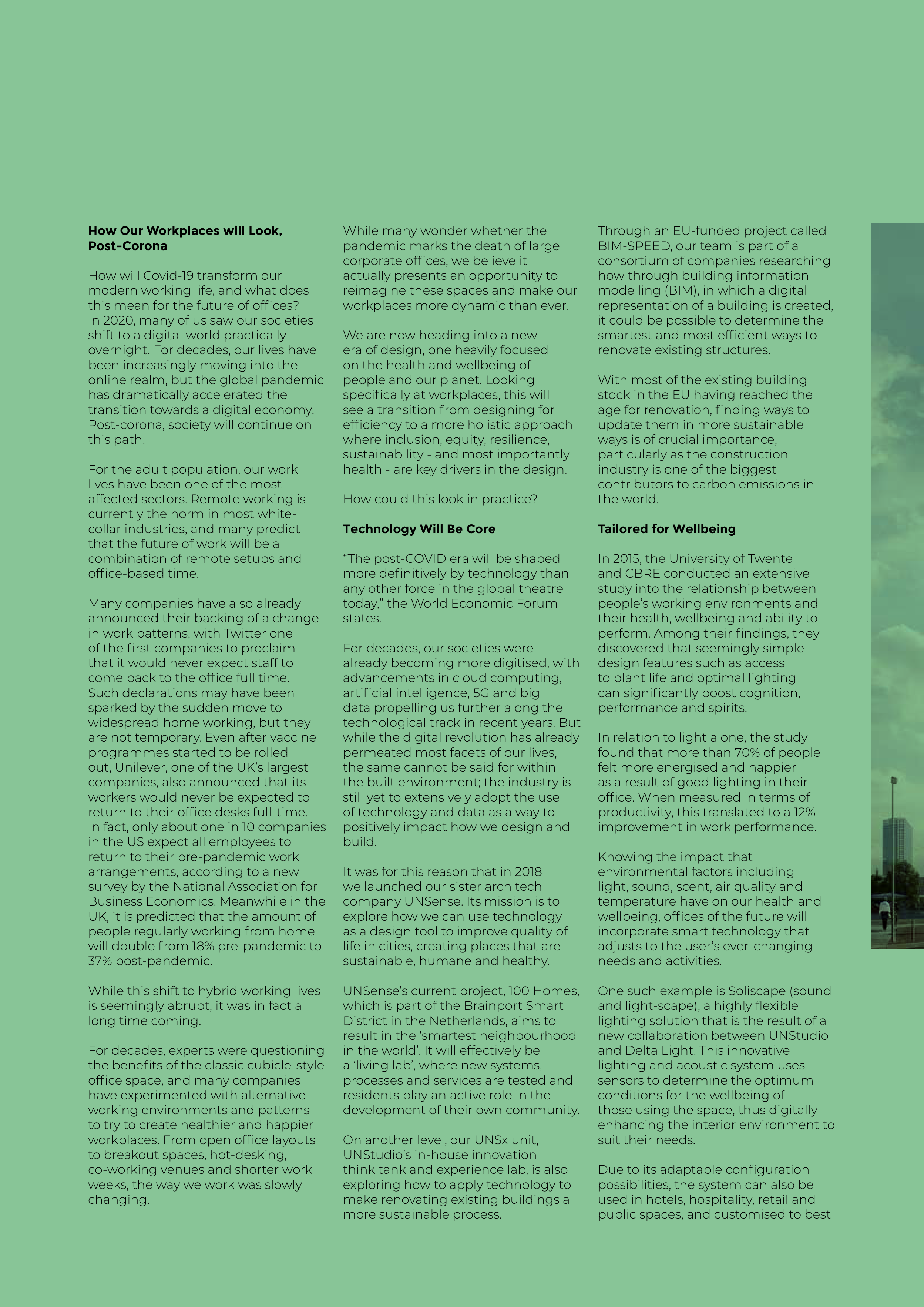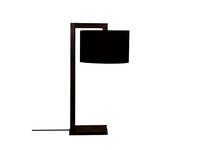How Our Workplaces will Look,
Post-Corona
How will Covid-19 transform our
modern working life, and what does
this mean for the future of offices?
In 2020, many of us saw our societies
shift to a digital world practically
overnight. For decades, our lives have
been increasingly moving into the
online realm, but the global pandemic
has dramatically accelerated the
transition towards a digital economy.
Post-corona, society will continue on
this path.
For the adult population, our work
lives have been one of the most-
affected sectors. Remote working is
currently the norm in most white-
collar industries, and many predict
that the future of work will be a
combination of remote setups and
office-based time.
Many companies have also already
announced their backing of a change
in work patterns, with Twitter one
of the first companies to proclaim
that it would never expect staff to
come back to the office full time.
Such declarations may have been
sparked by the sudden move to
widespread home working, but they
are not temporary. Even after vaccine
programmes started to be rolled
out, Unilever, one of the UK’s largest
companies, also announced that its
workers would never be expected to
return to their office desks full-time.
In fact, only about one in 10 companies
in the US expect all employees to
return to their pre-pandemic work
arrangements, according to a new
survey by the National Association for
Business Economics. Meanwhile in the
UK, it is predicted that the amount of
people regularly working from home
will double from 18% pre-pandemic to
37% post-pandemic.
While this shift to hybrid working lives
is seemingly abrupt, it was in fact a
long time coming.
For decades, experts were questioning
the benefits of the classic cubicle-style
office space, and many companies
have experimented with alternative
working environments and patterns
to try to create healthier and happier
workplaces. From open office layouts
to breakout spaces, hot-desking,
co-working venues and shorter work
weeks, the way we work was slowly
changing.
While many wonder whether the
pandemic marks the death of large
corporate offices, we believe it
actually presents an opportunity to
reimagine these spaces and make our
workplaces more dynamic than ever.
We are now heading into a new
era of design, one heavily focused
on the health and wellbeing of
people and our planet. Looking
specifically at workplaces, this will
see a transition from designing for
efficiency to a more holistic approach
where inclusion, equity, resilience,
sustainability - and most importantly
health - are key drivers in the design.
How could this look in practice?
Technology Will Be Core
“The post-COVID era will be shaped
more definitively by technology than
any other force in the global theatre
today,” the World Economic Forum
states.
For decades, our societies were
already becoming more digitised, with
advancements in cloud computing,
artificial intelligence, 5G and big
data propelling us further along the
technological track in recent years. But
while the digital revolution has already
permeated most facets of our lives,
the same cannot be said for within
the built environment; the industry is
still yet to extensively adopt the use
of technology and data as a way to
positively impact how we design and
build.
It was for this reason that in 2018
we launched our sister arch tech
company UNSense. Its mission is to
explore how we can use technology
as a design tool to improve quality of
life in cities, creating places that are
sustainable, humane and healthy.
UNSense’s current project, 100 Homes,
which is part of the Brainport Smart
District in the Netherlands, aims to
result in the ‘smartest neighbourhood
in the world’. It will effectively be
a ‘living lab’, where new systems,
processes and services are tested and
residents play an active role in the
development of their own community.
On another level, our UNSx unit,
UNStudio’s in-house innovation
think tank and experience lab, is also
exploring how to apply technology to
make renovating existing buildings a
more sustainable process.
Through an EU-funded project called
BIM-SPEED, our team is part of a
consortium of companies researching
how through building information
modelling (BIM), in which a digital
representation of a building is created,
it could be possible to determine the
smartest and most efficient ways to
renovate existing structures.
With most of the existing building
stock in the EU having reached the
age for renovation, finding ways to
update them in more sustainable
ways is of crucial importance,
particularly as the construction
industry is one of the biggest
contributors to carbon emissions in
the world.
Tailored for Wellbeing
In 2015, the University of Twente
and CBRE conducted an extensive
study into the relationship between
people’s working environments and
their health, wellbeing and ability to
perform. Among their findings, they
discovered that seemingly simple
design features such as access
to plant life and optimal lighting
can significantly boost cognition,
performance and spirits.
In relation to light alone, the study
found that more than 70% of people
felt more energised and happier
as a result of good lighting in their
office. When measured in terms of
productivity, this translated to a 12%
improvement in work performance.
Knowing the impact that
environmental factors including
light, sound, scent, air quality and
temperature have on our health and
wellbeing, offices of the future will
incorporate smart technology that
adjusts to the user’s ever-changing
needs and activities.
One such example is Soliscape (sound
and light-scape), a highly flexible
lighting solution that is the result of a
new collaboration between UNStudio
and Delta Light. This innovative
lighting and acoustic system uses
sensors to determine the optimum
conditions for the wellbeing of
those using the space, thus digitally
enhancing the interior environment to
suit their needs.
Due to its adaptable configuration
possibilities, the system can also be
used in hotels, hospitality, retail and
public spaces, and customised to best







